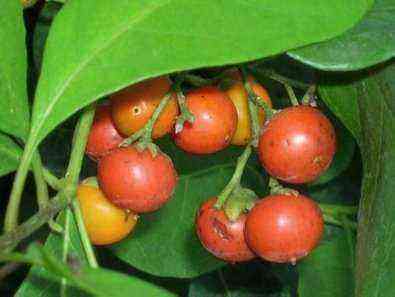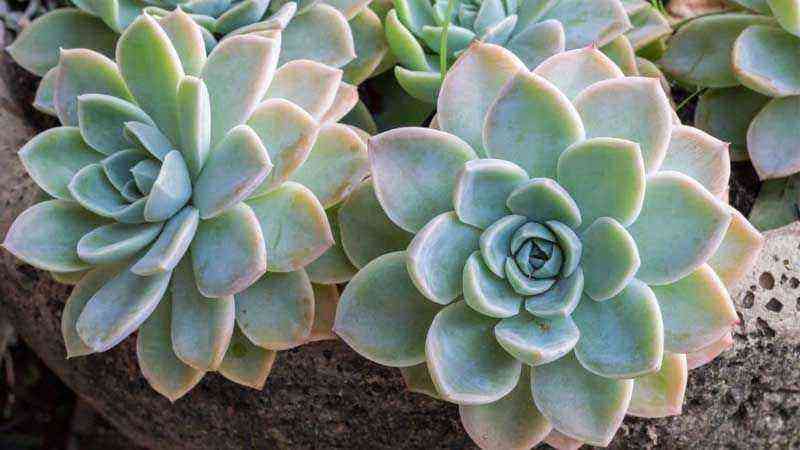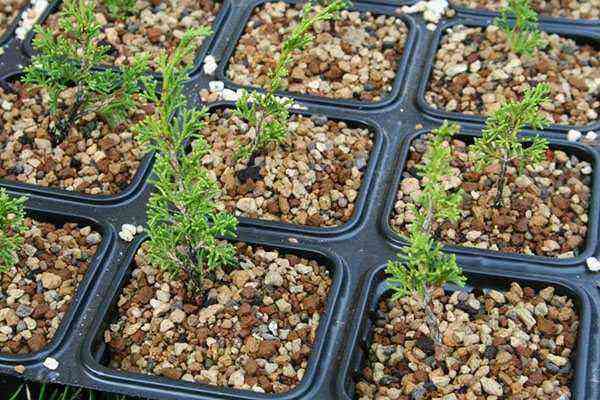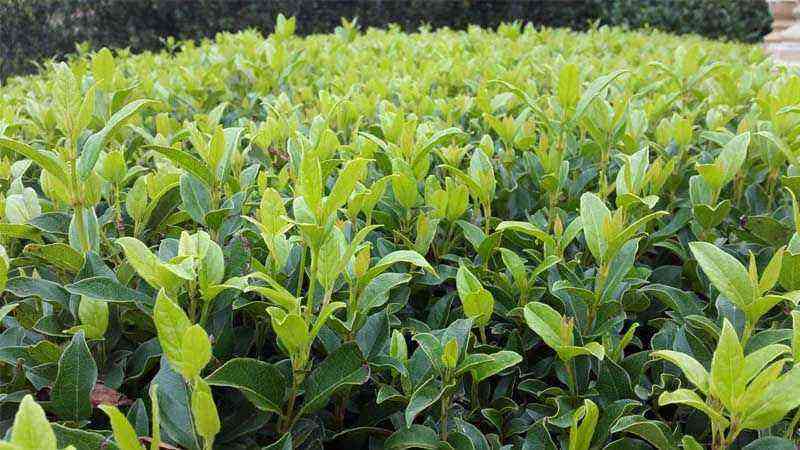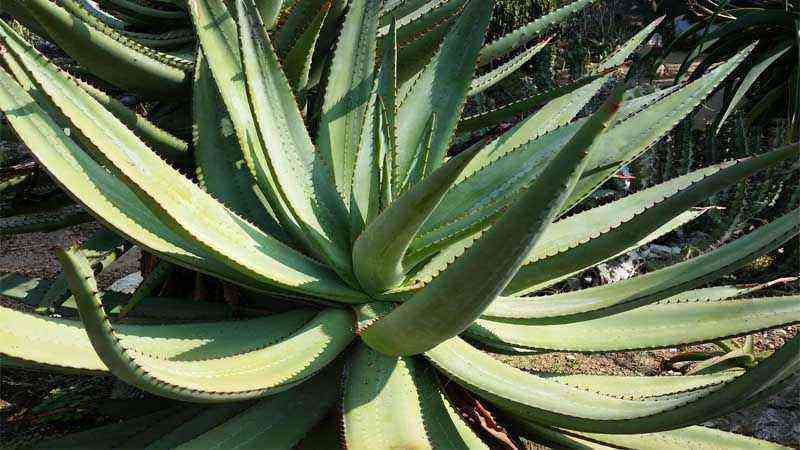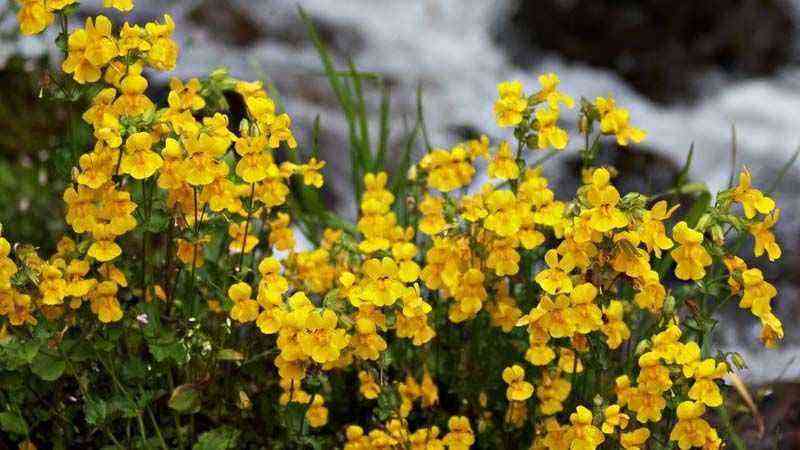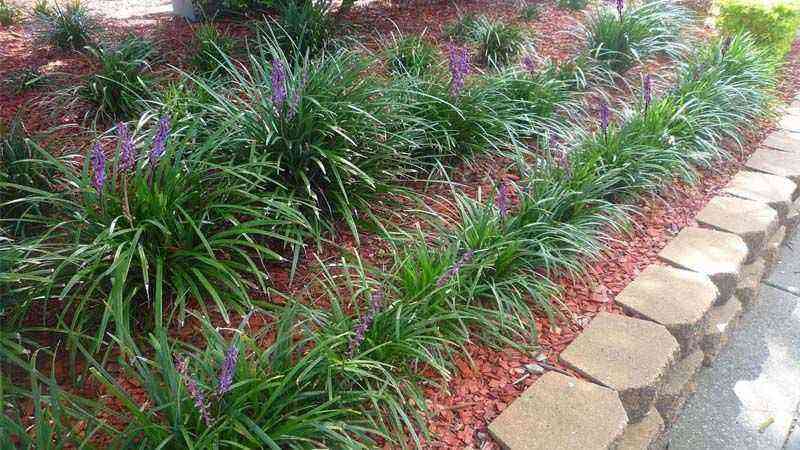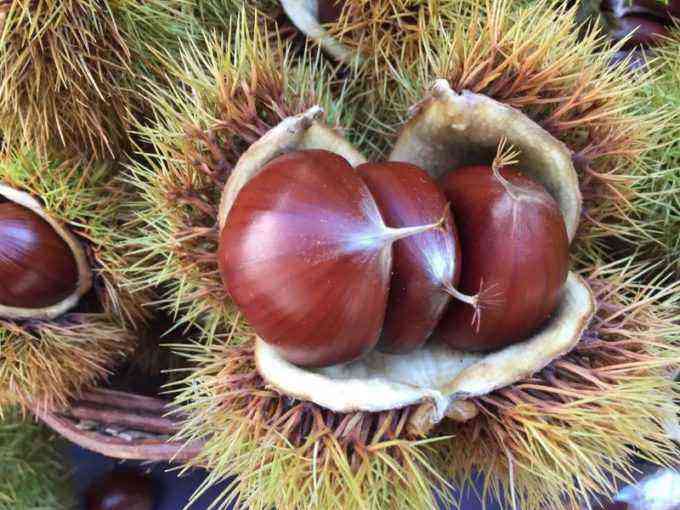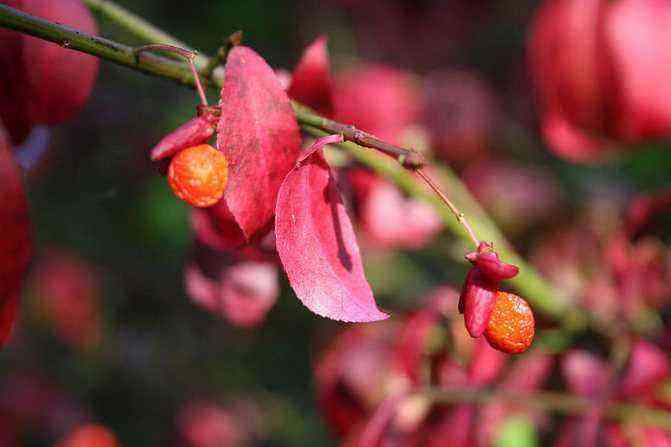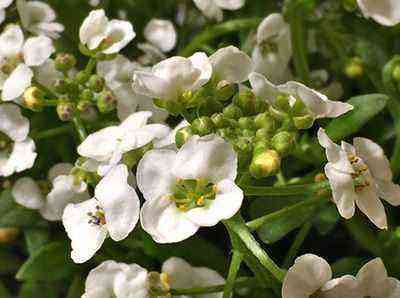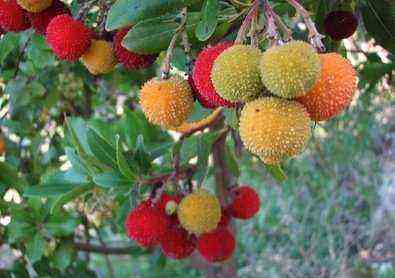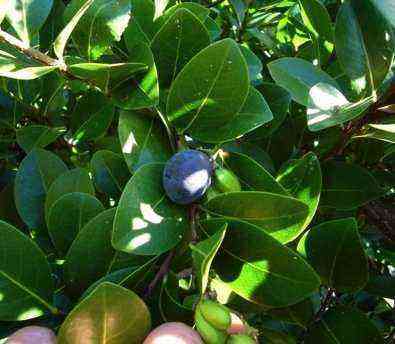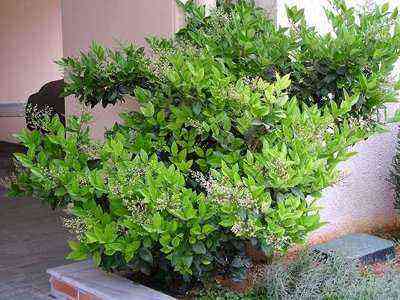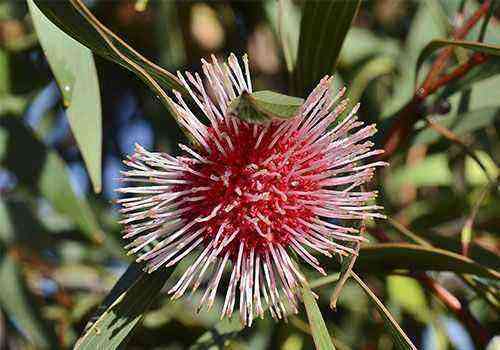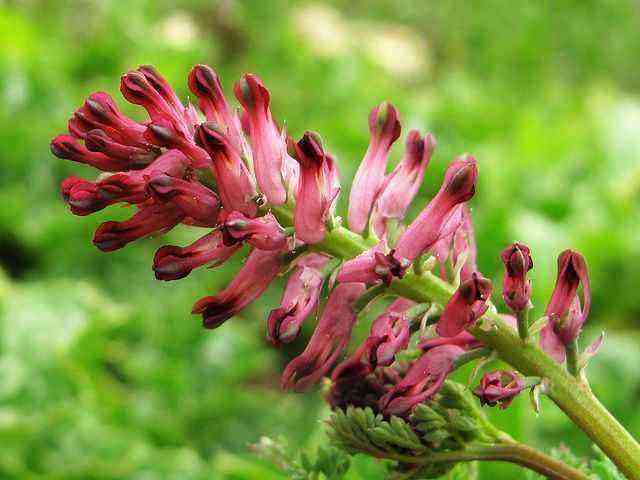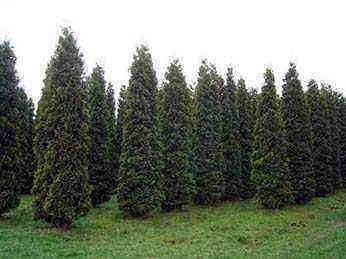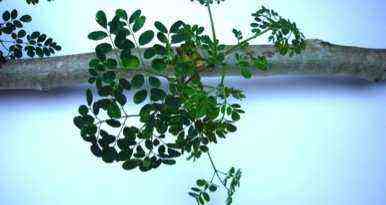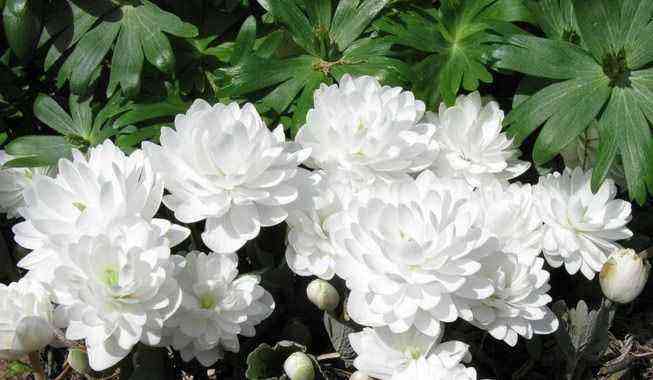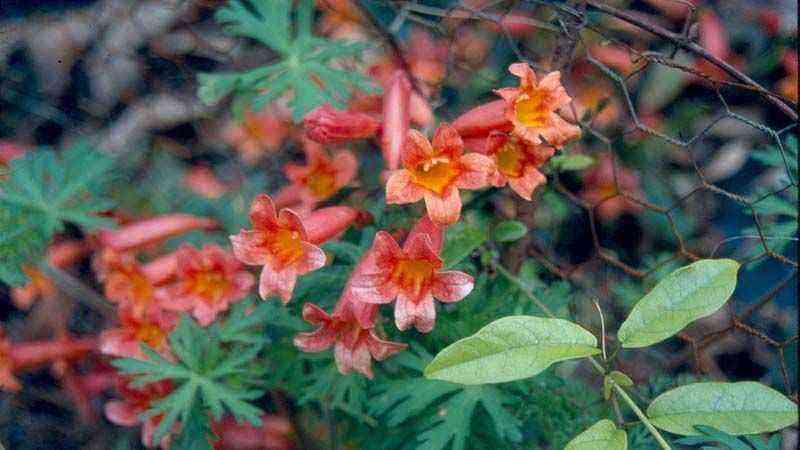Fragrance saga: natural scents around us.
(Syringasinensis)
Not everyone, smelling the flowers of this shrub with closed eyes, recognizes the lilac in it. It seems that the same motives, but there is also something of its own, special. The Non-Black Earth Region is unfamiliar to gardeners, although, having got to know her better, many will want to invite this baby to their front garden.
The Chinese lilac bush can reach 2-2,5 m in height, but usually it only slightly outgrows 1,5 meters. The shrub develops rather slowly, at first it seems that it will not overcome the meter mark. The branches of the plant are thin, whip-like. The leaves are small, leathery, similar to privet, but with a sharply drawn apex. The flowers are light lilac, about 1 cm in diameter, with a long tube, collected in racemose inflorescences.
The shrub is quite thermophilic, freezes even in ordinary winters, but completely freezes in the most extreme frosts. Like all lilacs, it tolerates pruning well. By the way, it is advisable to form bushes in the form of dense squat pillows. This is both beautiful and increases their winter hardiness, since the plants are covered with snow early and completely.
Lilac Zvegintsev (Syringa sweginzowii)
Not everyone recognizes the smell of this lilac as a pleasant aroma. Some people like it, others don’t. For example, my wife and I have strong discrepancies about him, she seems to her as pleasant as the scent of common lilac, but I see it as overly intrusive. Undoubtedly, he is different and stronger. In the midst of flowering and with a weak headwind, the smell of flowers can spread a good 30-40 m from their source. Where else can you find this !?
Chinese lilac (Latin Syringa x chinensis)
Is a naturally bred (natural) hybrid. The selection was attended by Persian lilac and common lilac. The variety was received back in 1777 in the Rouen Botanical Garden (France). Belongs to the Olive family from the genus of shrubs.
Characteristics of the culture
Chinese lilac is a tall ornamental shrub of about 5 meters with highly spreading brown branches. The leaves of this species are smooth, heart-shaped, 2 to 4 centimeters long. The multi-flowered inflorescences are about 20 centimeters long, conical in shape with large flowers 1,5 – 2 centimeters in diameter, mauve in color, with a delicate and exciting aroma. On one branch there are from 2 to 5 inflorescences.
Planting and growing conditions
Chinese lilac is propagated by green, non-ligneous cuttings (small shoots with a working root system) or by grafting. The place for planting Chinese lilacs should be sunny, with fertile soil, inaccessible to strong and squally winds. This species is a frost-resistant and hardy plant, but immediately after planting (more precisely, in the first winter), young cuttings can freeze out. It is important to avoid lowlands and wetlands where water accumulates in autumn and spring, in case of an unsuccessful choice of place, the plant may bloom very weakly or begin to rot.
Chinese lilacs need to be planted in early August, without postponing the time of transplanting until autumn. In autumn, the plant does not take root well and may not begin to bloom immediately, but after several years. The presented type of lilac is about 3 meters wide, this must be taken into account at the time of planting, and a certain distance between the seedlings must be observed. The planting material must have a healthy root system, the length of the roots is about 30 centimeters. During planting of Chinese lilac, it is necessary to avoid direct sunlight on still immature plants, it is best to plant in the evening or in cloudy weather.
Lilac is an unpretentious plant, but the first 3 years it needs to be intensively looked after. Feed and water occasionally. In the second year of flowering, Chinese lilacs need to be pruned in order to form a beautiful well-groomed bush and ensure abundant flowering. For the winter, the root system is covered with peat and foliage; you can also protect young cuttings from the cold with a covering material.
Milky luster
… This disease is very common among fruit and ornamental plants. A fungus develops on the trunk of the tree, destroying the wood. The milky sheen can be determined by carefully examining the leaves of the trees. An air bubble forms under the skin of the leaf, giving the affected area a characteristic shine.
Treatment.
it is necessary to remove infected shoots with subsequent burning, and treat the wounds with copper sulfate.
Verticillium wilt.
The causative agent of the disease is a fungus. With this disease, the leaves of the trees wither (especially in the sun), begin to turn yellow and eventually die off, and after them the whole bush dies.
Treatment.
As soon as the wilt was noticed, the infected branches of the plant should be burned, and the pit should be disinfected with formalin.
Necrosis.
A disease caused by bacteria during a period of high humidity. Young shoots are affected, as a result of which they turn black and wither.
Treatment.
Spray the plant with Bordeaux liquid. Two weeks later, the operation is performed again.
Rolling leaves.
The leaves damaged by the disease become thin, brittle, the edges curl into a tube. The disease is carried by insects. After contact with a diseased tree, all working equipment must be disinfected so as not to infect other plants.
Treatment.
The infected bush is completely burned as soon as possible.
Lush lilac bushes in spring impress with their flowering and aroma. Passing such beauty, I want to break the bouquet and put it at home. But it is better to plant a bush on your site, especially since spring is the best time to decide and choose a variety not from a photograph, but live. Lilac is winter-hardy and drought-resistant, and does not cause any problems from the point of view of care. It is completely easy to grow a shrub and then propagate it, the main thing is not to make gross mistakes.
Lilac Ordinary
Shrub of European origin. It is the progenitor of most modern cultivars with fantastic diversity.
The wild-growing species has simple, small, somewhat monotonous flowers of various shades of lilac color, with a classic “lilac” aroma.
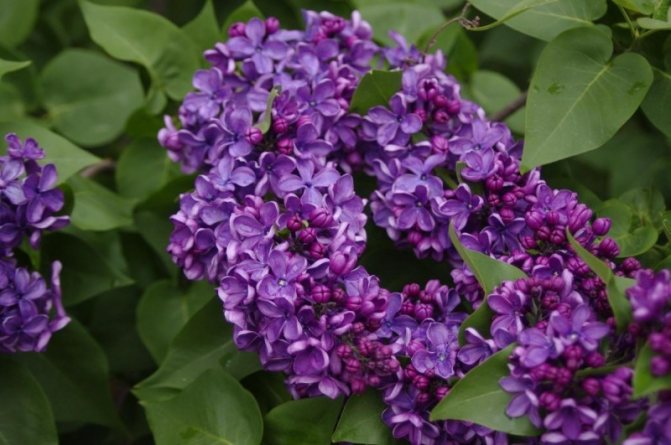

Differs in high adaptability to different climatic conditions, due to which it can grow equally well both in the south and in the north. Unlike most other types of lilacs, it prefers soils with a slightly alkaline or neutral reaction.
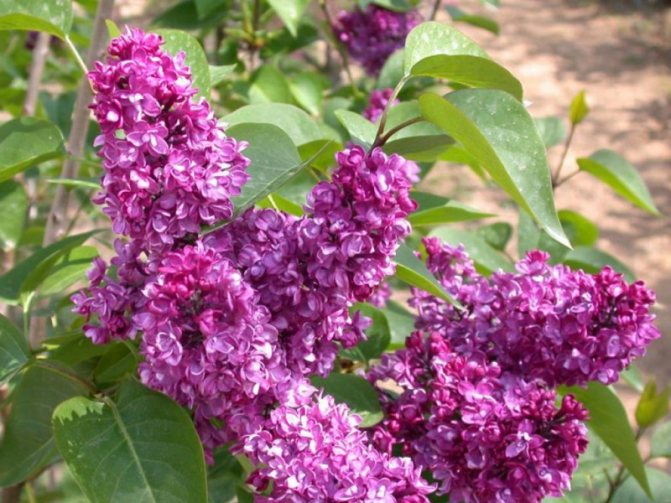
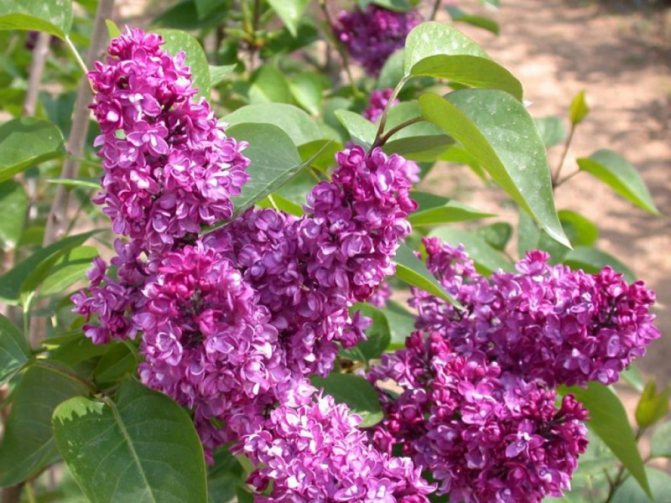
Loves open, well-lit places, although tolerates a little shade. Among the disadvantages is the abundance of root growth.


Varieties and varieties
The lilac in the photo, which is most often found in gardens and parks, is common lilac. Since this species has amazing variability, it is he who holds the record for varieties – there are about five hundred of them. These varieties differ in appearance and other characteristics, but do not differ in growing and growing conditions. There are other types as well.
Among the variety of varieties, pay attention to the following:
- Primrose is the only representative with yellow flowers;
- Amurskaya is a fragrant variety with very small white flowers;
Amur lilac
- Krasnaya Moskva is a variety with striking purple inflorescences. Krasnaya Moskva is a rare variety of domestic breeding with piercingly bright flowers.
Advice. Hybrids are often superior to their parents. They bloom earlier and grow faster, they have no root shoots.
Forms and varieties of Chinese lilac
Chinese lilac has several forms, both popular among gardeners and not so, each of them has its own distinctive features.
Planting lilacs
If all the factors are taken into account when landing, then in the future your attention of the lilac will not be needed. Failed experiences in growing lilacs are often associated with the wrong planting site. The place should be well lit, sheltered from the wind. In the shade, lilacs bloom weakly or may not bloom at all. Areas that are flooded in spring or autumn, as well as wetlands, are not at all suitable for planting. Young roots of the bush, even with minor flooding, begin to die off.
Planting a young lilac bush
Lilac loves fertile soils, very heavy or sandy does not suit her. Lime must be added to acidic soil. However, ordinary lilac easily tolerates the vicissitudes of the climate, because initially this shrub grew in the mountains, where the soil is not fertile, and the weather can be quite harsh.
A pit for planting is prepared according to the size of the root ball, the soil is filled with fertilizers with wood ash. Instances grafted onto common lilacs are planted by raising the root collar to avoid the appearance of unwanted root growth. Regular seedlings are planted leaving the root collar at soil level. After planting, the trunk circle is mulched. But the seedlings grafted onto privet must, on the contrary, be deepened so that the bush moves to its own roots, since the life of privet is much shorter than that of lilacs.
Lilac seedlings
The area of the plots very rarely allows you to equip a syringaria garden, and arrange many varieties of lilacs, since this is a rather large shrub that requires living space. If your site is large, then about three meters are left between the bushes, as much as possible. But not less than 1,5 m, although it is with this step and less that the hedge is planted.
Advice. Since lilac is a native of the mountains, in the spring, when there is a large amount of precipitation, the shrub blooms, and in summer it hibernates, it can bloom again in the fall. Therefore, in central Russia, the best time for planting is from mid-summer to early September, when the plant is dormant. Planted in spring or autumn, lilacs do not take root well.
Where it grows
This shrub has almost 30 different types and about 1,5 thousand hybrids in its genus. They are all bright and terry, however, differ in size and at times of the year when the flowers bloom.
The Amur type is a beautiful and decorative tree at the same time. It grows mainly in such places:
- Far East
- China
- Korea
- Primorsky Krai
- Amur Region
The tree is not only decorative, but also soil-strengthening.
Often, lilac prefers to grow on mountain slopes and where there are woodlands. Experiments, breeding with this plant began in the 19th century. From that moment on, many different varieties of this tree began to be bred.
The Amur variety is also called a long-liver plant. In one area, it can grow for a hundred years.
Care for lilacs
Lilac care will only be required in the first few years, while the plant is gaining strength. In the future, human participation is reduced to periodic pruning. Young seedlings need to be watered during prolonged drought, especially in August, when the second growth wave begins. An adult lilac will provide itself with moisture.
Sanitary pruning is carried out at any time of the year. Root shoots are regularly removed from the grafted forms. Faded branches are removed immediately after flowering. Lilac is prone to thickening, so one or two old branches are cut out from adult bushes annually, forming a sprawling bush. Excess young growth is also removed. Own-rooted specimens are pruned at soil level, and grafted to suitable branching, so as not to inadvertently remove the entire scion.
Regular pruning is needed to form a bush.
- If the seedling gives a weak growth and does not branch well, development is stimulated by short pruning, the next year a skeleton is formed. The branches of the grafted plants are cut over the third bud from the graft site.
- In the second year, all shoots that are directed inside the bush are removed, and annuals are shortened by half the length.
- In the third year, the pruning operation is repeated. When the crown is formed without voids and thickening, the one-year growth is not shortened. Flower buds are formed on last year’s shoots, so that the lilac blooms, the shoots are not shortened.
- In the future, the shape of the crown is maintained by removing excess shoots.
Advice. The acidity level of the soil and its features directly affect the color of lilac flowers.
Amur lilac – varieties
Now on sale it is possible to find only the Amur lilac Sudarushka. It is multi-stemmed, large in size, reaches a height of 10 m. The bark on the shoots has a maroon color and resembles cherry bark. The foliage takes on a purple-malachite hue in the spring, after which it darkens. White lilac Amur cracker has flowers – small, snow-white or milky, collected in inflorescences up to 25 cm long.
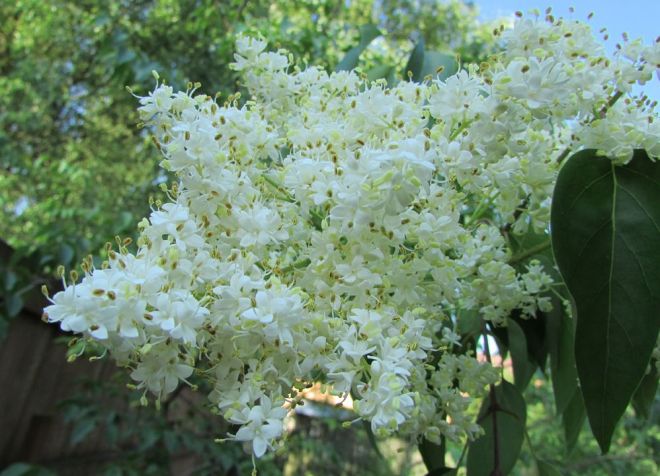
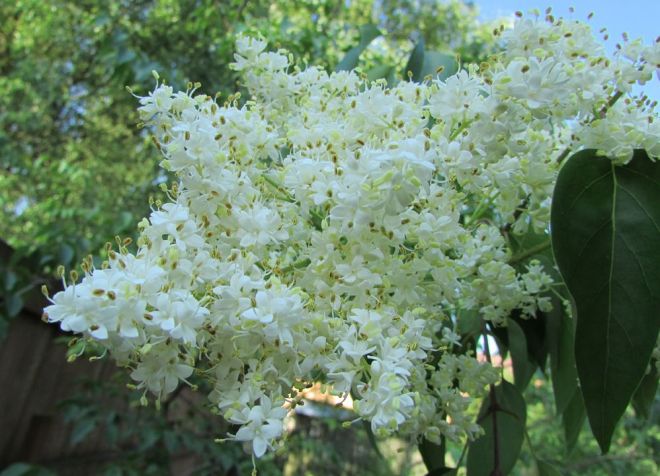
Fertilization and feeding
The nutrients added during planting will provide the plant with nutrition for the next couple of years. In subsequent years, in the spring, lilacs are fed with nitrogen fertilizers, and after flowering, phosphorus and potassium are added once every three years. Phosphorus-potassium fertilizers have a beneficial effect on the formation of flower buds. An increased dose of nitrogen will provoke the growth of vegetative mass to the detriment of flowering.
Lilacs need to be fed with both organic and mineral fertilizers
In addition to organic and mineral fertilizers, you can apply chelated top dressing from a sprayer on the leaves.
Care: pruning
Looking at the thickets of lilacs, abundantly strewn with flowers, it may seem that she absolutely does not need either pruning or shaping a bush. Alas, this is not the case. Lilacs respond well to pruning. Even if only old branches remain at the lilac bush, dormant buds still awaken on them – so there is no need to be afraid to damage the bush.
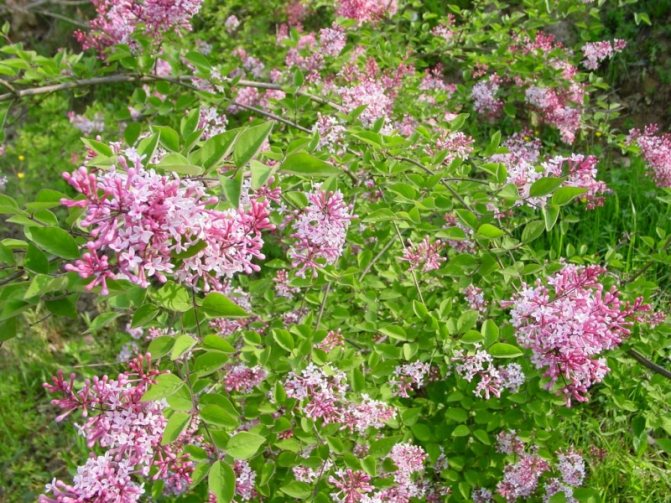
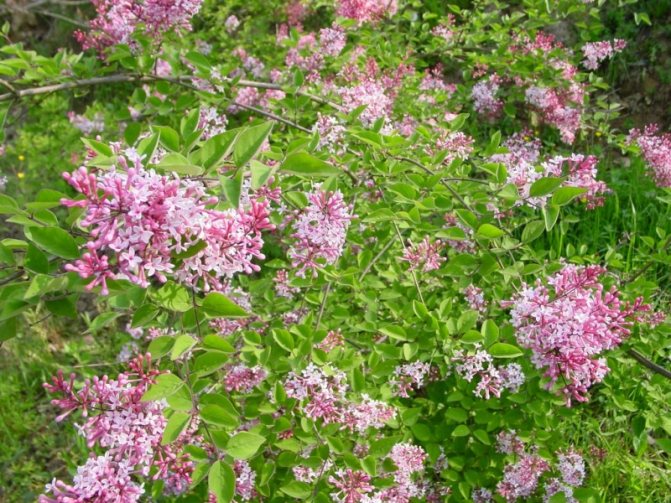
And, on the contrary, not removed old, broken, diseased or dried branches only thicken the bushes, reduce the illumination inside the bush. As a result, the annual growth decreases, flowering weakens, the bush loses its decorative effect.

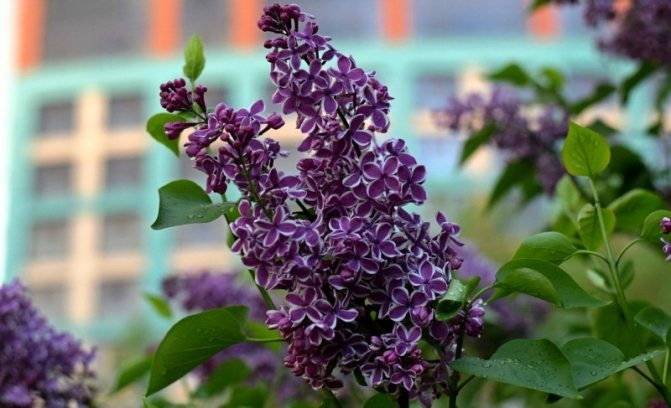
Lilacs are thinned out in early spring, at the same time root shoots are removed from the species lilac. The shoots of the grafted varieties are removed constantly, and sanitary pruning is also carried out as necessary throughout the growing season.

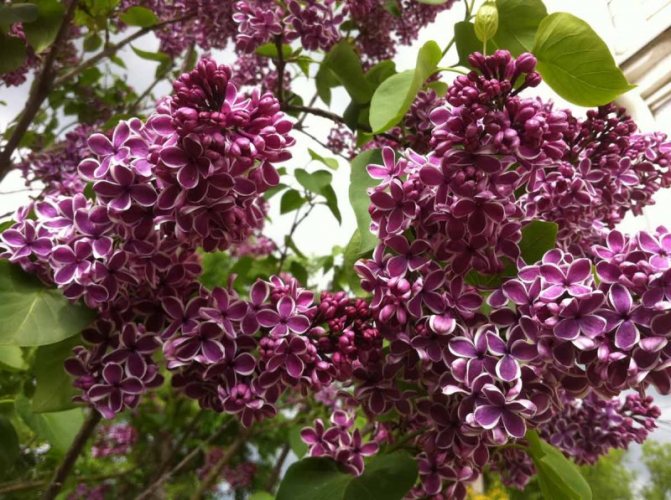
For bouquets, you can and (with abundant flowering) even need to cut approx. 1/3 flowering shoots. Attention: cut, not break! Then it is advisable to cut off all faded panicles. This is especially important for varietal lilacs.


Reproduction of lilac
Lilacs reproduce in the same way as many other shrubs:
- cuttings;
- layering;
- seeds.
Reproduction of lilac by layering
Breeding method layers
the least time-consuming and will allow you to get a solid one-year-old seedling with a well-developed root system in one season, completely ready for transplantation. In the spring, near the bush, make a furrow with a hoe and bend a branch into it. Cover with soil so that a few apical shoot buds remain on the surface. By the fall, the young bush will be ready, next year it can be transplanted to the place designated for it.
The middle part of semi-lignified shoots in July is cut into cuttings
… The selection of cuttings can be combined with summer sanitary pruning. Privet, common or Hungarian lilacs are used as a stock. The easiest way to graft is copulation, when the stalk and stock are cut at an angle of 45 degrees, aligned with the slices and tightly wrapped.
seed
harvested in the middle of autumn, dried and sown in a school. For spring sowing, preliminary stratification is required. Seed germination varies from 14 days to several months, depending on the type of lilac. Seeds propagate wild species, young seedlings of which can then be grafted.
Propagation of lilac cuttings
Wolf lilac
A powerful shrub naturally growing in the south of Primorye. It has almost the same advantages as Hungarian lilac, but blooms a little later.
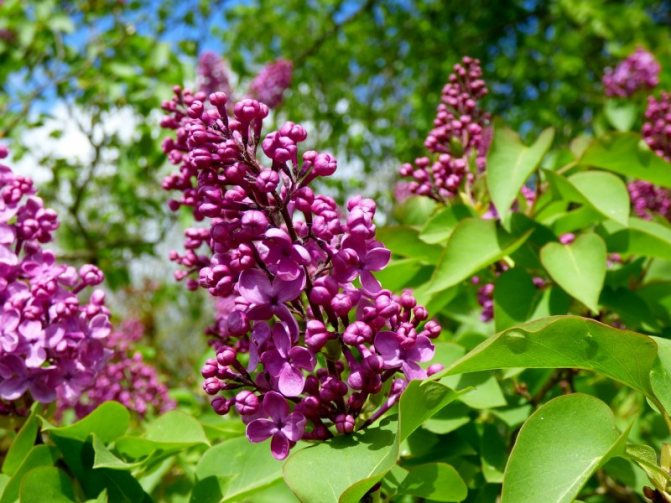
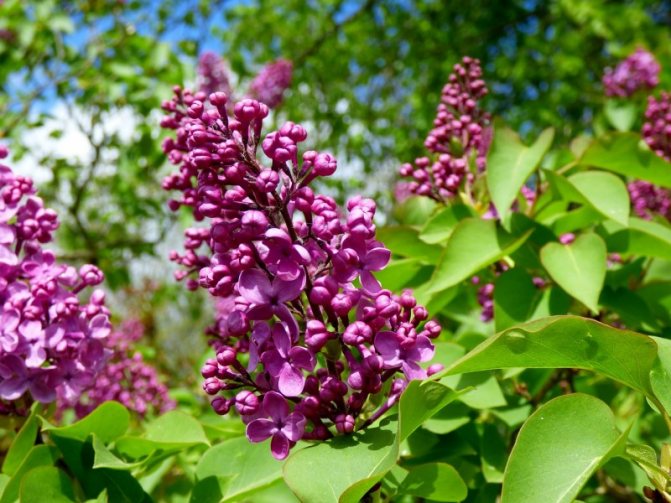
It also easily tolerates formative pruning, is resistant to unfavorable urban conditions, and is very winter-hardy.

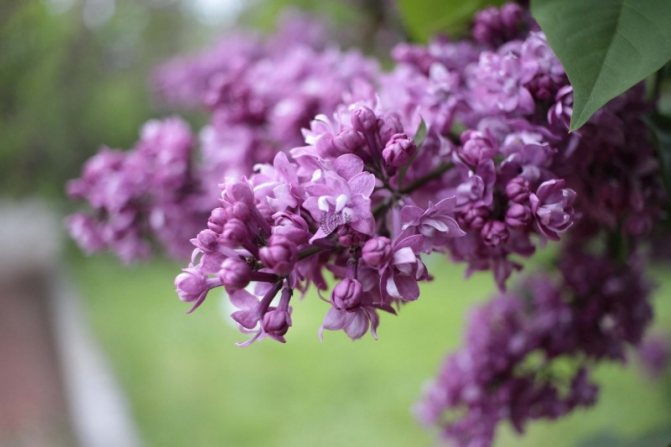
It grows quickly, gives an abundance of root shoots, tolerates transplanting without any problems and takes root well (which is rare for lilacs). It prefers moist, even damp places; in the southern regions it may suffer from a lack of moisture.
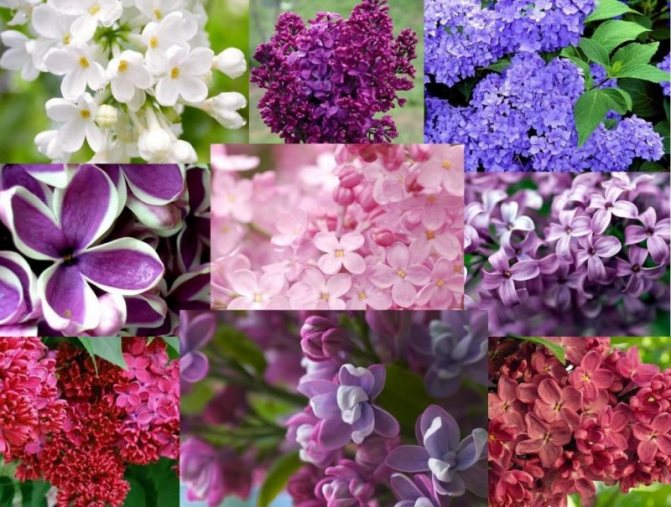
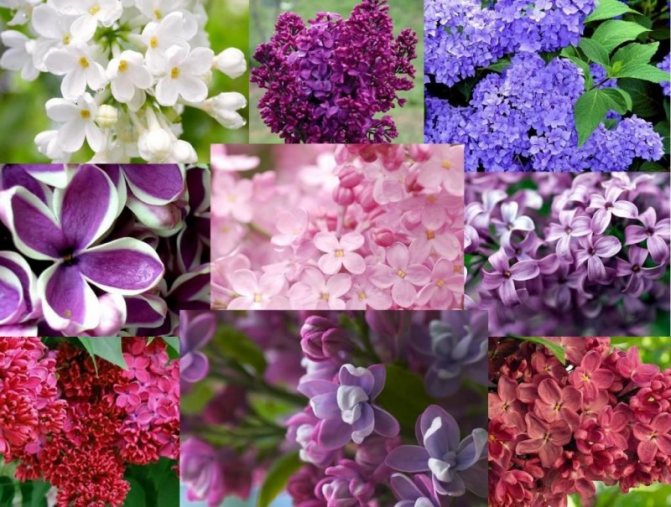
Diseases and pests
Lilacs are rarely affected by diseases or pests. Varietal specimens are also resistant, but mistakes made in agricultural technology can greatly weaken the plant and endanger it. Heavy soil and buried planting of shrubs can provoke vascular wilting or fusarium. Various root rot, leaf spots and necrosis cause potassium deficiency in the soil. Sour soil and stagnant moisture, excess nitrogen and damage to branches are fraught with rot on the shoots.
Infectious diseases can be bacterial in nature, as well as caused by phytopathogenic fungi. The first signs of disease appear in early spring, especially on young bushes.
Fungal lesion of the lilac bush
Unfortunately, viral and mycoplasma diseases are almost impossible to cure. If the disease is at an initial stage, then you can cut out the affected shoots, if it does not help, the bush is uprooted and burned, and the soil is disinfected. It is impossible to take material for cuttings from diseased plants and collect seeds.
Acacia false shield, lilac mite (bud and leaf), leafhoppers and weevils, speckled moth, lilac moth and hawk moth – this is the main list of pests, although other insects can also cause harm. They fight them with chemicals.
How to care for lilacs: video
Growing lilacs: photo
Among the valuable gifts that China presented to humanity, along with delicate silk and fine porcelain, there is an amazing ornamental plant – buddleya. The deciduous shrub from the family of norichnikovyh in the shape of inflorescences and fragrant aroma is very reminiscent of the well-known lilac, for which it received its second name – “Chinese lilac”.
More than one hundred and forty different species are attributed today to this genus, which includes many varieties with different shades of inflorescences and aromas. This makes the plant popular in landscape design. If, after looking at the photo, you firmly decide that buddley should bloom in your garden, planting and caring for it in the open field will be within your reach. How to grow “Chinese lilac” and use it to decorate a summer cottage or garden plot, we will tell you in detail in this material.
Chinese lilac – photo
Chinese lilac is one of the most decorative varieties of its kind and is very popular with gardeners. Planting and caring for seedlings is not at all difficult and requires the implementation of the simplest steps and rules, but the result will not be long in coming. As a result, you will get a beautiful and luxuriantly flowering plant on your site.
Description of buddley
Under natural conditions, buddley shrubs grow in height from 1,5 to 3 m. Oval leaves, pointed at the ends, densely cover the flower-bearing stem, which makes the bush resemble a green ball. Small flowers are collected in long apical inflorescences, forming an ear or panicle. Depending on the variety, the size of the inflorescences varies from 20 to 40 cm. The palette of colors is the widest: white and pale pink, red, purple and lilac, lilac, cream and even yellow.
The shrub grows rapidly and begins to bloom in the first year. The bloom is abundant and lasts from June to September, one might say, all summer.
Buddleya is a good honey plant, which allows it to be used not only in decor, but also in agricultural technology.
Description of lilac
Lilac can be in the form of a shrub or a low-growing tree no more than 8 m high. Its bark is brown with a grayish tint. At an early age of the plant, it is smooth, then it becomes covered with cracks. Leaves, simple or separately-pinnate, retain their rich emerald color until frost. The shape of the leaf depends on the variety of lilac and is: ovoid, oval, heart-shaped, elongated with a pointed tip.
Lilac blooms with lush, dense tassels up to 30 cm long. Their color also depends on the varietal affiliation of the plant. Flowering occurs at different times, which is influenced by certain factors: species, weather and climatic conditions of the region. This usually happens between April and June.
Buddleya and the secrets of landscape design
The unpretentiousness and originality of this plant have received worthy recognition from flower growers, and buddeley has rightfully taken one of the main places in landscape design. With her participation, a wide variety of flower decor compositions are created:
- single planting of Black Knight or Harlequin shrubs on the lawn and lawn will emphasize the contrast of purple and violet shades of inflorescences against the background of green grasses;
- undersized Nanho Blue will serve as a beautiful edging of the recreation area;
- Medium-sized Adonis Blue will create a fragrant hedge adorned with blue buds;
- joint planting with flowering shrubs of spirea and Potentilla will colorfully decorate any corner of the garden;
- flower-bed planting of bushes framed by astilba and thyme, phlox, marigolds and daisies, calendula and alpine poppies will create a natural picture of a natural bouquet.
Buddeley harmoniously fits into the decor of an alpine garden, is appropriate in English landscapes, brings a bright touch to the Art and Craft painting, is organic in a classic interior and adds a zest to the country style.
Lilac in garden design
Lilacs are a great decoration for any garden plot, country estate and city park. In a small garden, it can be a single growing bush of a luxuriously flowering variety (tapeworm on the lawn) or a small group of several varieties.
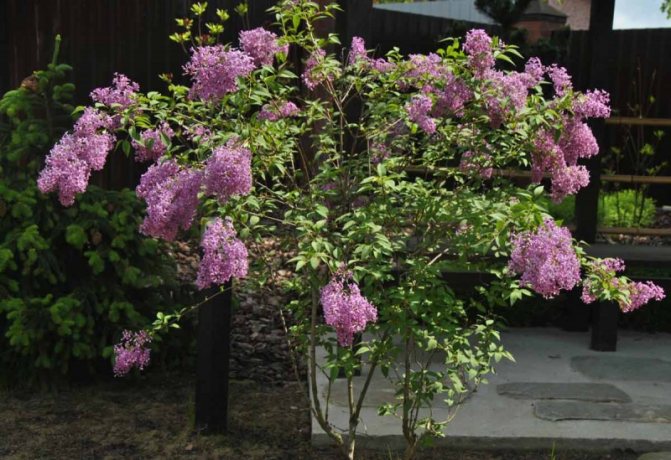
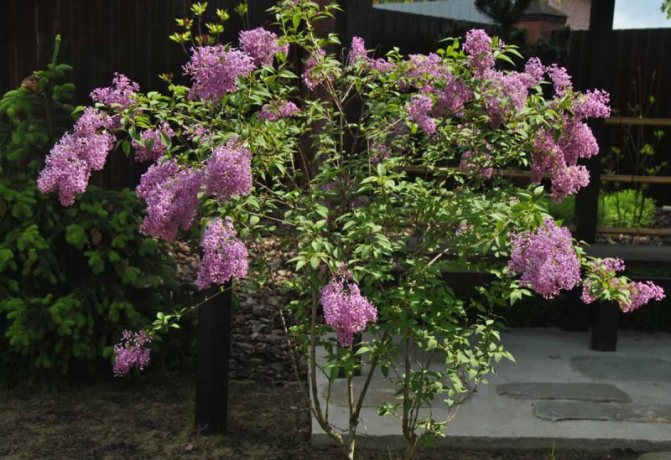
On a plot of a large area, lilacs can replace a fence – they make a tall, dense hedge, which also blooms beautifully.
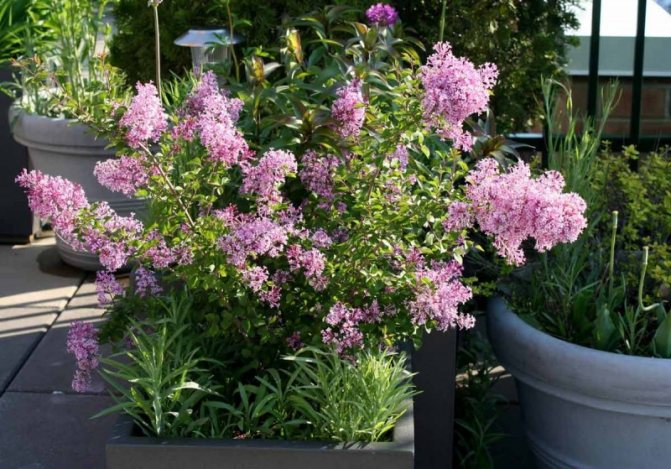

After flowering, a hedge of lilac alone, alas, turns into a green wall of leaves. You can simply avoid this monotony – just by adding suitable neighbors to the lilac.

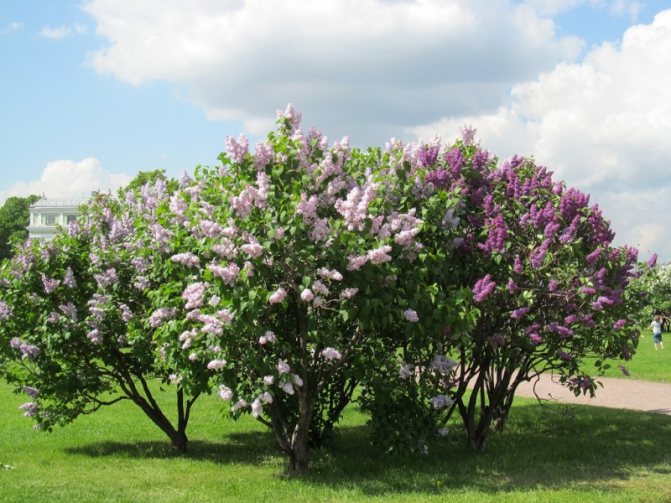
These can be shorter shrubs (spirea, mock orange of different varieties, Thunberg barberry, panicle hydrangea), or perennial flowers (peonies, phloxes, astilbe, etc.).
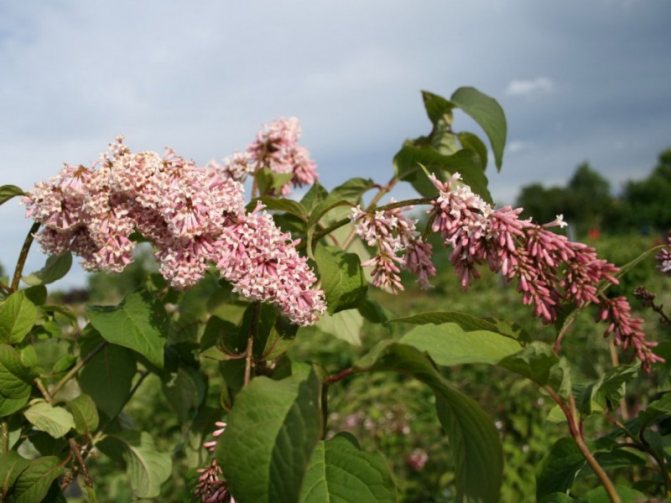
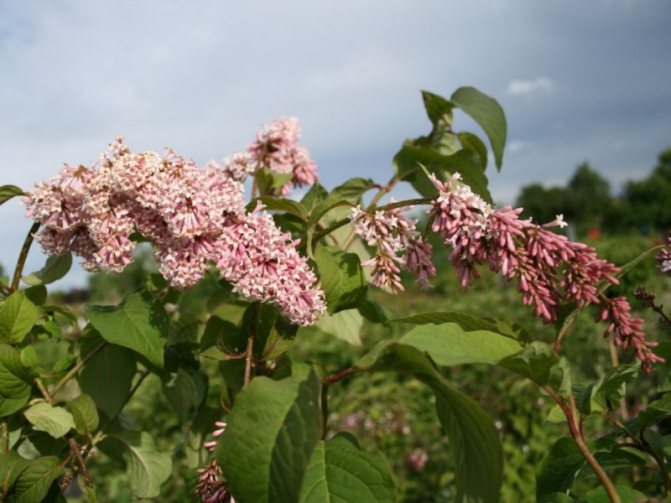
Such a kind of “undergrowth” will also solve another problem of the “lilac” hedge – the lower parts of the bushes that have become bare with age.


Planting dates and methods of growing
Despite its exoticism, buddleya can be grown in a garden. This can be done by:
- sowing seeds for growing seedlings;
- vegetation using young shoots or woody cuttings.
Sowing seeds and rooting cuttings are carried out in February. Already at the end of April or at the beginning of May, after the end of the frost, the seedlings are planted in open ground in a permanent place.
Rooting of young shoots is carried out in June-July directly in the garden, planting them immediately after cutting to a permanent place.
Lilac Hungarian
Endemic to the Carpathian Mountains. The species is very viable: it tolerates severe frosts, blooms profusely and sets seeds even in the Far North.

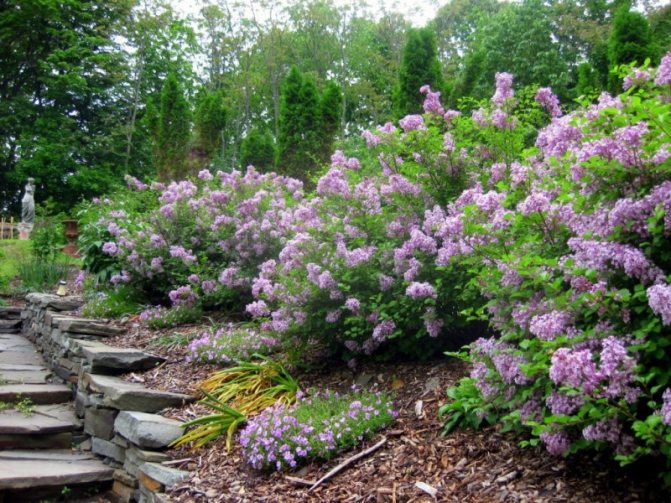
It grows quickly, tolerates shading, excessive soil moisture, gas and smoke content in the air.

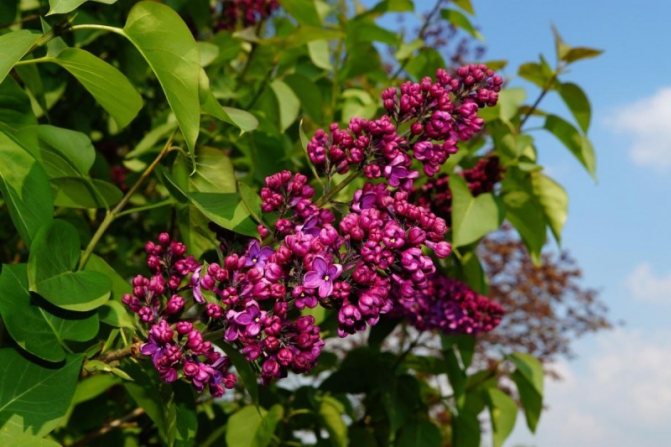
It tolerates pruning and shaping and can be used to create tall, dense hedges. Does not give root growth.

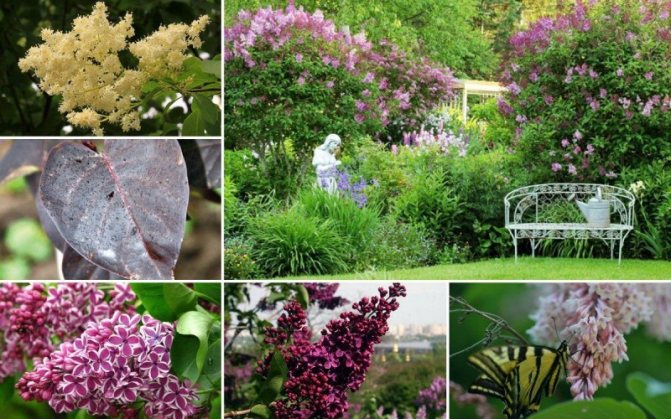
With so many advantages, perhaps even her small, not very fragrant flowers can be forgiven for her – however, the flowering is very abundant.


Growing seedlings
- The seedling container is drained, filled with a sand-peat mixture of neutral reaction and moistened.
- The seeds are mixed with sand, sown and sprayed with water.
- The container is covered with foil and placed in a room with a temperature of 20-24 ° C.
- The first shoots will appear in two to three weeks.
Further care consists of periodic airing of seedlings and spraying with water at intervals of every three days.
It is recommended to occasionally add potassium permanganate to the spray water to prevent blackleg formation.
When two or three leaves are formed, the seedlings dive and begin to harden, exposing them to the balcony or garden for several hours. When the seedlings are formed, they are planted in open ground.
Lilac cut
A lilac bouquet is a stunning aroma and beauty. The beauty, unfortunately, is short-lived. The cut lilac looks fresh for only 3-5 days, then it wilts.


In order to extend the life of the “lilac” bouquet at least a little, the following rules must be observed:
- cut branches early in the morning
- cut obliquely, under water (to remove air)
- remove all lower leaves
- use chlorine-free water (settled)
- branches can be completely immersed in cold water at night
- for wilted branches, update the cut and set for 15 minutes. into very hot water
- keep flowers cool
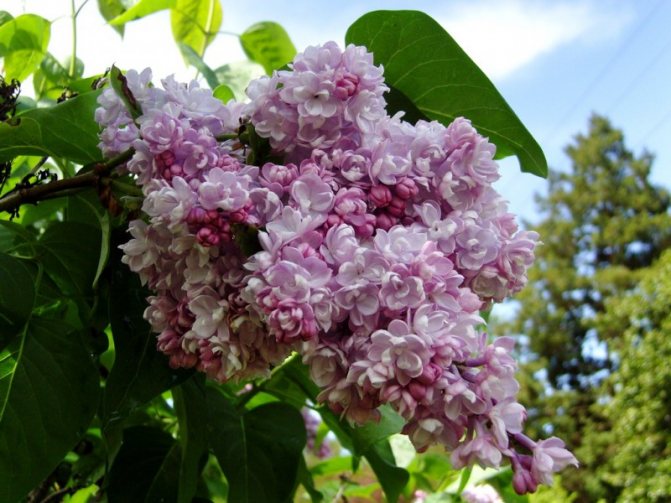
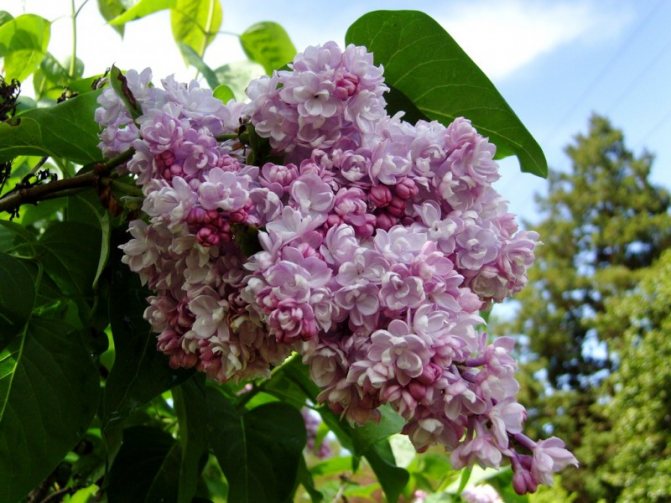
Rooting young shoots
In this case, the apical young shoots of an adult bush are used for seedlings. For shoots 15-20 cm long, the lower leaves are removed, the sections are treated with a growth stimulator, then they are planted in the ground in a permanent place in the garden, deepening into the soil to the level of the buds.
Seedlings are watered and covered with foil.
After two weeks, when they are rooted, the cover is removed and the plants are tended as usual. For the winter period, the seedlings are covered with a layer of peat, fallen leaves or spruce branches 5 cm thick to protect them from freezing.
Reproduction of Chinese lilac: the most common ways
Growing a bush of Chinese lilac on your site is not so difficult, even a novice gardener can handle the simplest steps. To do this, it is enough to know the main methods of reproduction of this culture. To get a young, beautiful plant, you can use the following options: seed propagation, grafting method, propagation by layering and cuttings. Each option has its own rules and distinctive features, which are important to consider in order to obtain the desired result.
Seed propagation of Chinese lilac
- This breeding method is rarely used. Most often, breeders and scientists resort to it for growing new species of lilacs in greenhouses and greenhouses. In addition, it should be borne in mind that Chinese lilacs do not always set fruits, so it is not always possible to collect the seeds of this plant.
- If you are lucky and seed pods have set on the plant, you need to collect them after they have fully ripened in autumn in damp weather.
- After collecting, the boxes must be dried at room temperature for several days, and then Chinese lilac seeds are extracted from them.
- To ensure the best germination, it is important to stratify the planting material. To do this, the seeds must be mixed with wet clean sand in a ratio of 1 to 3 and poured into a container that is placed in the refrigerator in the vegetable compartment. The stratification process lasts about 2 months, during which the sand must be regularly moistened.
- After stratification, Chinese lilac seeds are sown in pre-prepared containers with soil. This usually occurs in early or mid-March.
- It is imperative that you first bake the garden soil in the oven, and then place it in a box of a suitable size. The seeds are buried by a maximum of 1,5 cm.
- After planting, the surface must be moistened with a spray bottle.
- The first shoots can appear both in 2 weeks and in a few months.
- Approximately 2 weeks after the appearance of the first shoots, it is necessary to dive the seedlings. When the air and soil have warmed up enough, young plants are planted in a permanent place in the open ground.
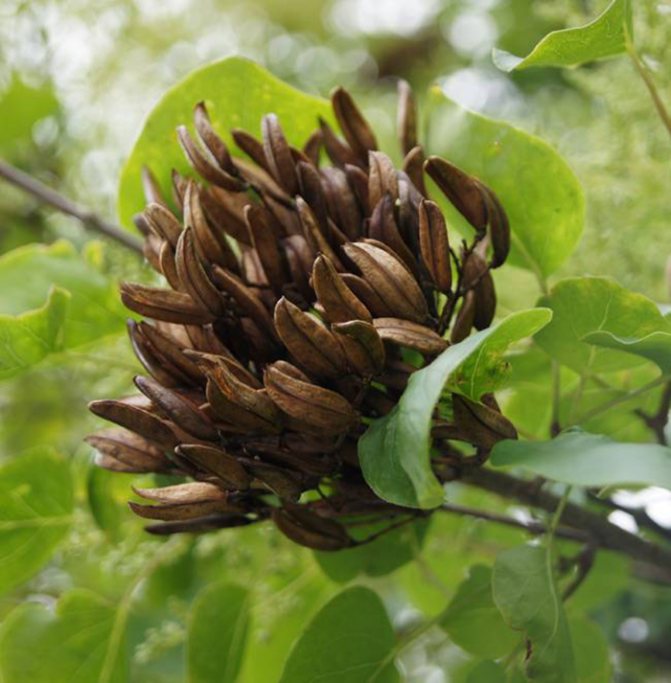

Reproduction of Chinese lilac by layering
- This vegetative propagation method for Chinese lilacs is used much more often, as it is simpler and does not take much time.
- It is recommended to carry out reproduction by layering in the spring, when the weather is warm.
- On a lilac bush, it is necessary to choose a young shoot that is just beginning to lignify, which must be squeezed with copper wire in two places: at the very base and 80 cm from the first wire. In this case, the wire should not damage the bark.
- Next, under the bush itself, dig a small groove only 1,5-2 cm deep and put the shoot you have chosen and prepared into it. After that, sprinkle with soil, leaving only the top on the surface.
- Young shoots will begin to appear in the area highlighted by the wire. When they reach a height of 15-17 cm, they need to be covered with fertile soil about half the height.
- Throughout the season, it is important to regularly care for the layers: constantly moisten the soil, remove weeds and add soil.
- In the fall, the cuttings in the places of inflection must be separated from the bush with wire, after which it is divided into shoots with a piece of base with fully formed roots.
- Young seedlings can be planted in a greenhouse for growing, or planted immediately in a permanent place. Do not forget to cover the young plants well.
Reproduction of Chinese lilacs by grafting
- The propagation of Chinese lilacs by grafting is also very popular. Although it is worth noting that such seedlings are less resistant and adapted to cold weather and may freeze slightly.
- The stock for this hybrid can be common lilac or Hungarian.
- It is best to carry out reproduction by budding in the spring.
- To do this, you need to take care of the cuttings in February or March, which are cut from annual shoots and are stored in the refrigerator until the grafting.
- Before budding, prepare the stock: cut off all shoots and branches, leaving 15-20 cm; be sure to remove all root growth; Water abundantly for several days.
- For budding, take a special budding knife and gently split the rootstock stump to a depth of about 2-3 cm.
- Next, a stalk of Chinese lilac is cleaned with a knife from both sides in such a way that a kind of wedge is obtained, with which the scion is inserted into the split rootstock stump.
- The junction is fixed with tape.
- Experienced gardeners recommend treating all damaged areas with a garden pitch, and then wrap the grafting site with a bag to create a greenhouse effect.
- The package is removed only when the buds begin to swell on the scion.
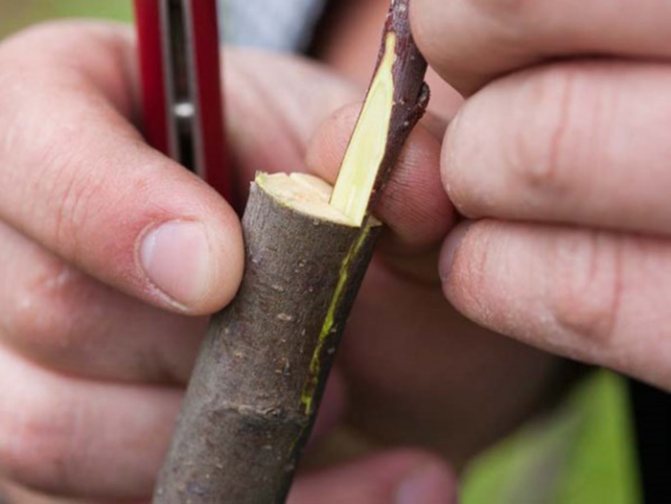
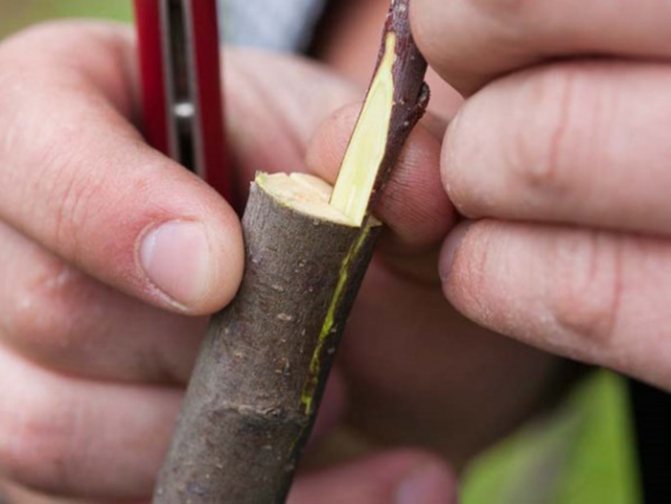
Propagation of Chinese lilac by cuttings
- This method is quite difficult, since the cuttings of Chinese lilac are difficult to root. Therefore, it is important to carry out everything correctly and clearly in order to get a positive result of your work.
- First of all, the cuttings must be cut immediately after flowering or during it. You need to choose young annual shoots of medium thickness with 2-3 nodes.
- Cuttings must also be properly prepared. To do this, the lower cut is made at an angle, and the upper one is straight. All leaves must be removed from the lower part, with this the upper leaves are removed only half.
- Before rooting, it is recommended to place the cuttings of Chinese lilacs in a root former solution for a day.
- It is important to root the cuttings in a greenhouse. To do this, prepare a special container or box, which must be disinfected in advance with a solution of potassium permanganate.
- The soil, consisting of peat and sand, also needs to be treated with special preparations or calcined in the oven.
- Cuttings are rooted at a short distance from each other, after which the box is covered with foil or each cutting is separately covered with a plastic bottle.
- Rooting occurs after about 2 months, when you can remove the shelter and air the planting.
- Young plants are planted in a permanent place only in the spring.

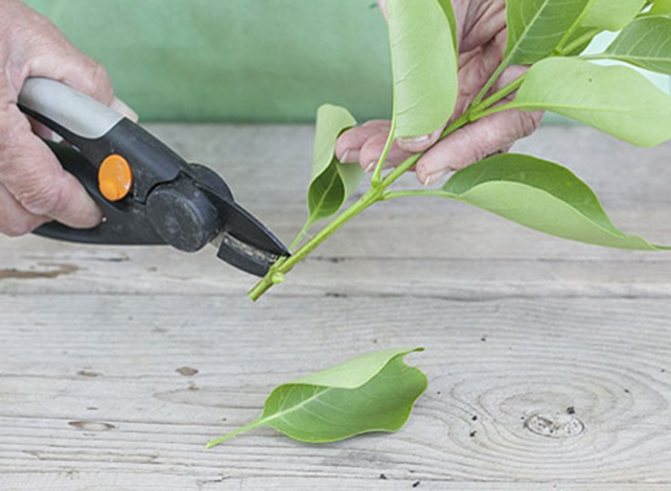
Open ground planting rules
Buddleya is a thermophilic plant that grows well in the open, freely spreading branches, but is very sensitive to strong winds. Therefore, the landing site should be chosen in a free sunny area, closed from the wind.
The plant prefers light, neutral soils of moderate moisture.
- The soil at the planting site is dug up, cleaned of weeds, compost, ash, mineral fertilizers are applied and loosened.
- Prepare holes 40×40 cm with a depth of 20 cm. For the free development of the crown of the bush, the distance between them should be at least two meters.
- The bottom of the holes is lined with a drainage layer 10-15 cm thick.
- Seedlings and rooted cuttings are planted together with a lump of earth, then additional soil mixture is added, lightly tamped, watered with water and mulched with peat.
In the future, the plant needs to be provided with comprehensive care.
Care: fertilization
Lilac loves to “eat”. If possible, it is better to replace mineral nitrogen fertilizers of the earth with organic ones: slurry, mullein solution, bird droppings, even weed infusion. And humus or compost is simply brought into the zone of the trunk circle.
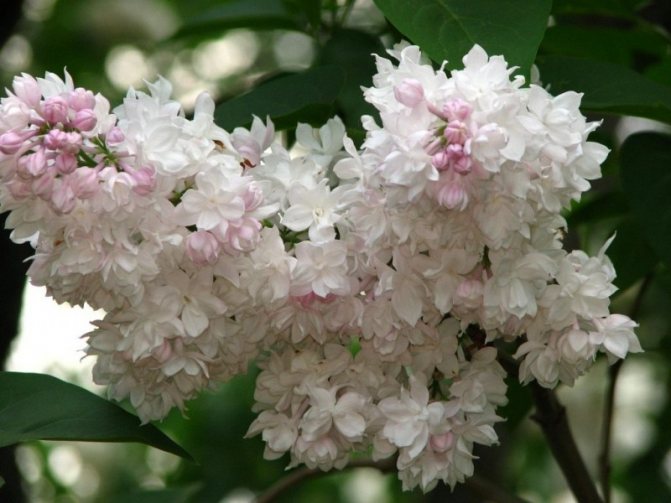
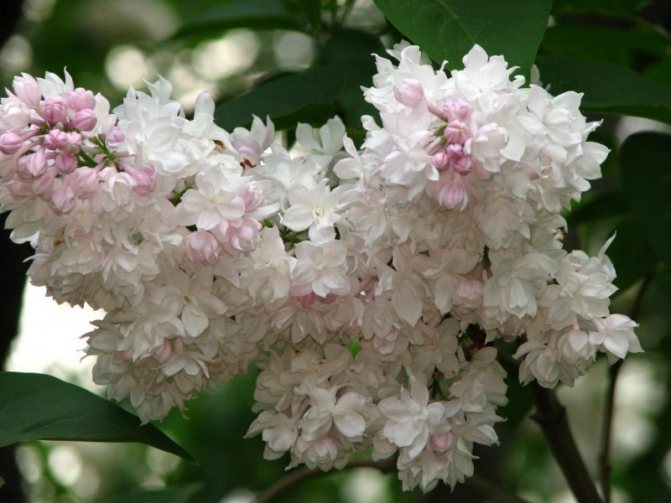
Potash and partly phosphorus fertilizers can be replaced with ash, it is applied when the soil is loosened in spring. These fertilizers will not be able to “overfeed” the bush, which is especially important for young plantings and for species lilacs.


Care for an adult plant
Compliance with the main rules of agricultural technology allows you to easily grow this exotic bush in your home garden. The main requirements are:
- watering mode
… Buddleya tolerates the dry period well, so watering is done when the soil dries out. Water consumption – a bucket for each bush. In hot seasons, it is recommended to spray the leaves of the bush with warm water. The optimal time for watering and spraying is in the evening after sunset; - mulching
root zone. Protects roots from overheating and retains moisture; - fertilizer.
The first feeding with minerals is carried out in the spring during the formation and growth of shoots. During budding, the plant is fertilized a second time by adding phosphorus-potassium solutions. Once again, you need to feed the buddley when it blooms. For this, organic substances are used; - sanitary pruning
… It is necessary to stimulate the growth of new shoots and the formation of the crown of the bush. It is carried out in the fall after the fall of the leaf or in early spring before the beginning of sap flow – late March or early April. When pruning, the bush is shortened by two-thirds of the total height. Additionally, it is necessary to pinch the tops of the shoots and remove dry peduncles; - winter conservation
… The heat-loving buddleya is afraid of frost. A winter shelter is provided for its protection. Conservation begins when the bush enters a dormant state. The trunks of the bushes are covered with dry soil to the level of the third bud, the trunk circle is mulched with peat, and arcs with a height of 30-100 cm are installed on top and covered with a waterproof material. In the case of a particularly harsh winter, a layer of hay, fallen leaves or spruce branches is laid on top of the cover.
If you take care of the buddleya correctly, it will decorate your garden with wonderful flowers for many years almost all summer, as in the photo.
Agricultural technology for growing Chinese lilac: secrets and nuances of care
Caring for Chinese lilacs is not particularly difficult if all the rules for planting a plant in open ground are followed.
- Watering. During the growing season and active flowering, lilac seedlings require abundant watering, which is largely reduced in summer. At this time, the plant has enough natural precipitation.
- Loosening and mulching. Approximately 3-4 times per season, it is important to loosen the soil in the near-trunk circle to a depth of 7-8 cm. This must be done carefully so as not to damage the roots of the lilac. In order not to carry out such procedures, small perennials can be planted in the trunk circle, which will loosen the soil. It is also important to cover the soil with peat and rotted leaves to protect the roots from heating.
- Top dressing. The first 2-3 years of fertilization can not be applied, since the Chinese lilac has enough nutrients that were introduced during planting. From the second year after planting, nitrogen fertilizers can be applied at the rate of 60 grams per plant. Slurry can be used as such fertilizer – about 2 buckets per bush. From nitrogen fertilization, the color of the foliage improves, the growth of shoots is activated. About once every two years, Chinese lilac bushes can be fed with potash-phosphorus fertilizers. To do this, you can use double superphosphate and potassium nitrate at a rate of 35 grams per plant.
- Pruning. To make the Chinese lilac bushes look beautiful and well-groomed, they must be cut regularly. This procedure begins at 3 years after planting. It is best to prune in the spring before the buds swell. On a Chinese lilac bush, it is necessary to cut off all weak and damaged shoots. During rejuvenating and formative pruning, it is necessary to select 5-10 straight and strong branches on the bush, and the rest are pruned. It is useful to cut off shoots with flowers that are cut by 2/3
- Shelter for the winter. Young seedlings of Chinese lilacs must be covered with the onset of cold weather. To do this, the near-trunk circle is tightly covered with fallen leaves and peat with a layer of up to 10 cm. When growing this plant in the middle lane and in the Urals, you can also cover older bushes, since the shoots can sometimes freeze.
Landing
Today, Amur lilac grows in many garden plots. Planting and caring for this plant is simple. This type of lilac prefers open, sunny areas, well protected from the winds. The site should be well-drained and not flooded in the spring, when the snow begins to melt actively, and in the fall with prolonged downpours. Stagnant water, even for a short time, can provoke the death of young roots.
Lilac is unpretentious, but it will bloom profusely only on fertile, slightly acidic or neutral, loose soils, which contain a lot of humus. It is recommended to lime acidic soils. Clayy heavy soils can be improved by adding sand and humus to them. If the groundwater is very close, drainage is necessary.
Before planting lilacs in planting pits, compost or humus and superphosphate must be added to them. It is better to plant the bushes in August, since in the spring the buds swell early in the lilacs, and in this state the plant does not tolerate transplanting. If your planting material is in containers, then you can plant them at any time.
Care
Despite the fact that crackers are considered an unpretentious culture, caring for them requires certain skills and adherence to a number of features.
Watering and humidity
First of all, the culture needs a fertile and constantly loosened soil. Therefore, loosening and weeding of weeds around the bush is very important. Weeds generally pose a danger to young specimens, since Amur lilac has a superficial root system.
Important! Weeds such as dandelions, wheatgrass and whitewash are very dangerous for lilacs.
In the summer season, watering the bush is required abundantly, pouring about 20 liters of water per square meter. If it rains frequently, then watering is reduced. With the beginning of autumn, it is recommended to stop watering, and water only in case of severe drought.
Overflows are dangerous for lilacs. They can cause premature budding of the shoots, and in winter, the root system can freeze.
Important! In drafts and strong winds, it is recommended to increase the amount of water for irrigation.
If the culture grows near highways or in the city, then the leaves must be cleaned of dust and dirt by spraying with water.
Feeding
Crackles need a lot of fertilizers and nutrients, including potassium, nitrogen, phosphorus, calcium and other elements.
Fertilizers with nitrogen content are allowed to be applied already one year after planting the crop.
Also, mullein infusion, chicken droppings and manure are effectively used as top dressing.

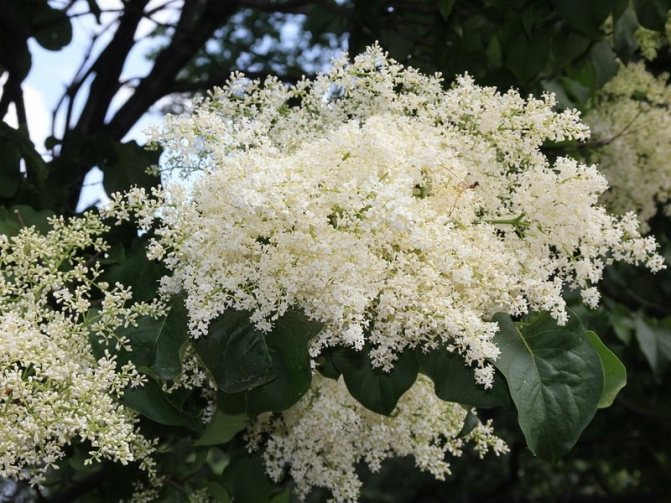
Reproduction by seeds
The seeds can be purchased at stores and nurseries, or harvested by yourself. Growing a plant from seed is a fairly simple process. The seeds are harvested at the end of autumn. It is best to do this in cloudy or rainy weather, then the seeds will not get enough sleep from the pods.
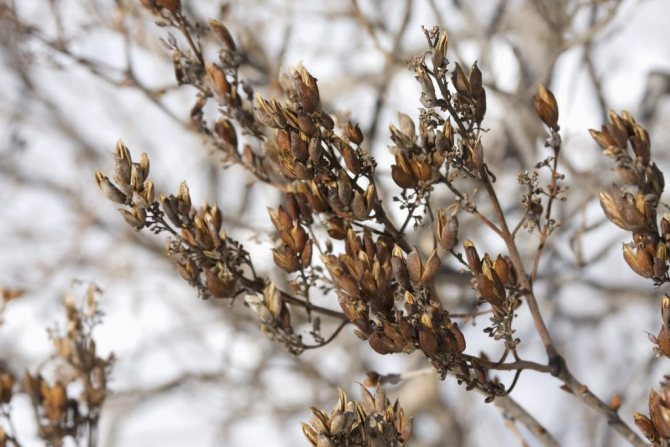
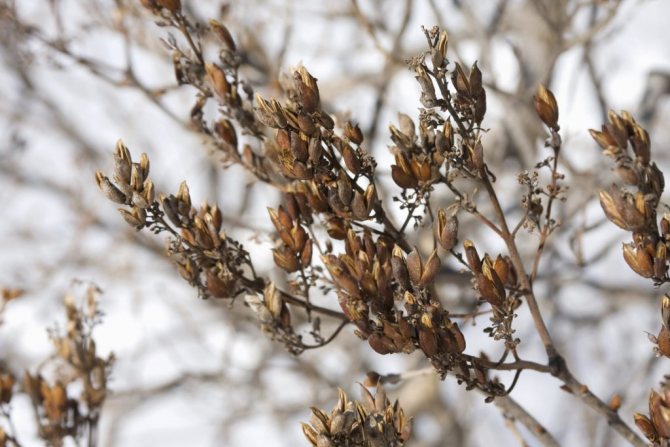
For several days, the boxes must be dried in a dry place, and then carefully remove the seeds.
For the stratification of seeds, it is recommended to mix them with moistened sand and put them in a container, at the bottom of which there are holes for draining water. The temperature at which the seeds are stratified should not exceed 5 degrees Celsius. For example, you can put a container with them in the refrigerator.
The soil for sowing seeds needs to be prepared and steamed. Sowing seeds is necessary 2 months after stratification.
Store-bought seeds do not need to be stratified as they are sold peeled.
Diseases of the Amur lilac
Amur lilac can get sick with all diseases typical for other varieties of this shrub.
Among the most common diseases of the Amur lilac, there are (picture 6):
- Ring spot – a viral disease, during which characteristic spots and stripes of light green or yellow color are formed on the leaves.
- Mosaic accompanied by the formation of yellow spots of irregular shape over the entire surface of the sheet plate. As the disease spreads, all leaves curl and dry out.
- Necrosis is a bacterial disease that develops especially actively in cold and wet weather. The tops of young shoots begin to fade and blacken gradually.
- Fitoftoroz leads to the fact that the development of the kidneys stops and they do not bloom. The bark and leaves are covered with characteristic brown spots.
Depending on the type of disease, specific methods of control are also taken. For example, to combat necrosis, spraying with Bordeaux liquid is used, and the procedure must be carried out 2-3 times with an interval of two weeks.


Figure 6. Common diseases of the Amur lilac: 1 – ring spot, 2 – mosaic, 3 – necrosis, 4 – late blight
To eliminate late blight, spraying with Bordeaux liquid with copper sulfate is also used (dilute 100 grams of sulfate and 100 grams of lime in a bucket of water). It is also necessary to ensure that the soil around the shrub is not too wet.
Effective methods of combating viral diseases have not yet been developed, so all affected shrubs are dug up and burned along with a clod of earth. It is important to prevent viruses from damaging plants, so you need to use only high-quality planting material, and a disinfected tool for pruning.
